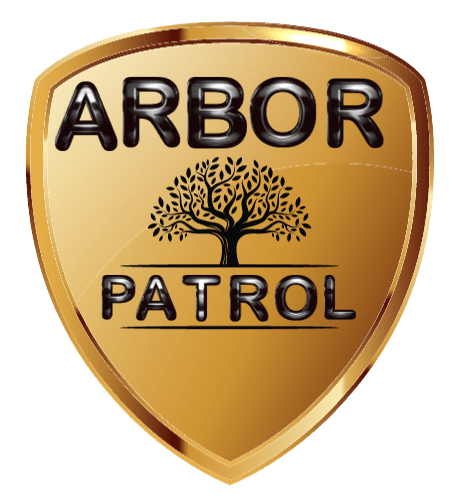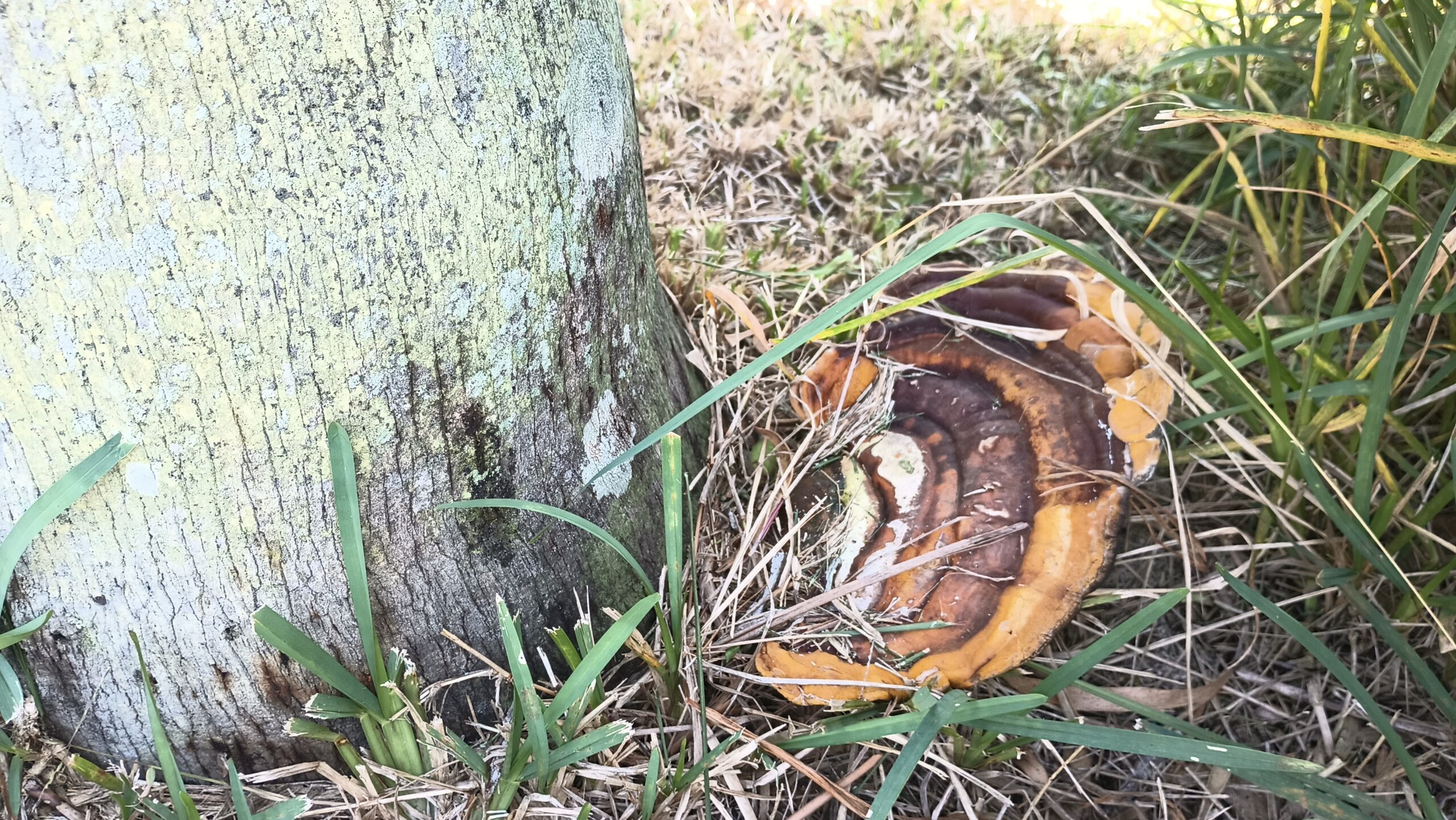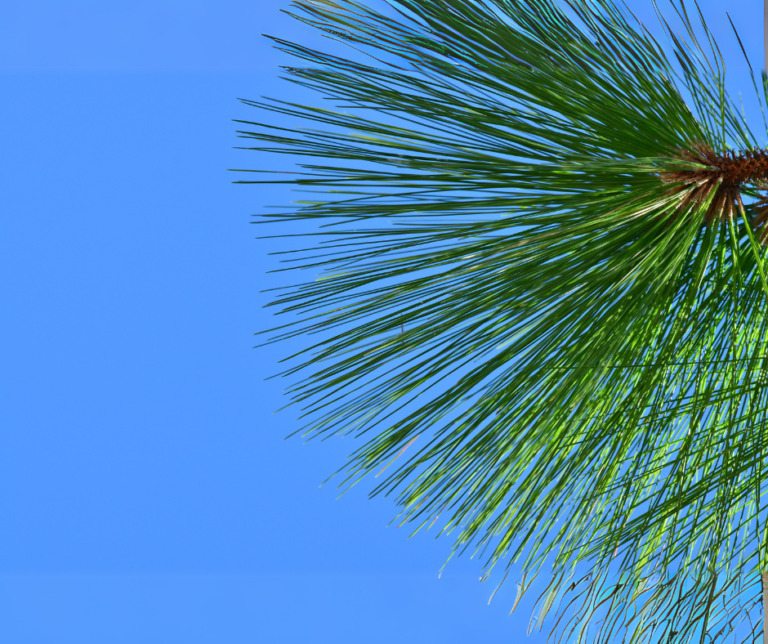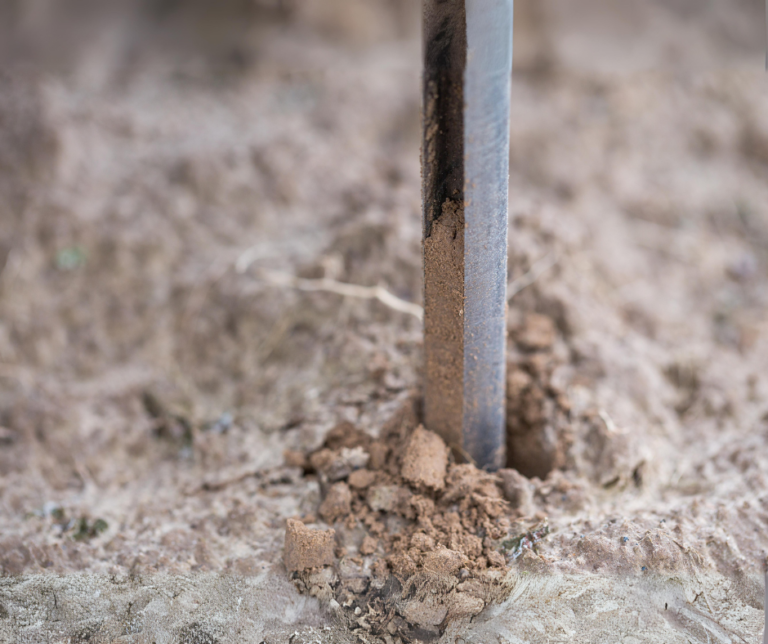Ganoderma Butt Rot: The Silent Killer of Florida’s Palms
Hello, fellow palm enthusiasts! James Fulks here, owner of Arbor Patrol Tree Service and a Board Certified Master Arborist with the International Society of Arboriculture (ISA). Here in Brevard, Indian River, and Osceola Counties, palm trees are a cherished part of our landscape. But these majestic giants face a silent threat – Ganoderma butt rot, a fungal disease that can devastate your beloved palm.

At Arbor Patrol Tree Service, we frequently encounter Ganoderma during our tree care services. Unfortunately, there’s no cure for this disease once it takes hold. However, with proper knowledge and preventative measures, you can significantly reduce the risk of Ganoderma infecting your palms.
Contents
- 1 Susceptible Palms and the Looming Threat in the Soil
- 2 The Importance of Clean Equipment: Preventing Transmission Between Trees
- 3 Overpruning and Open Wounds: Invitations for Disease
- 4 Palm Health and Complete Fertilization
- 5 Beyond Ganoderma: Other Palm Killers to Watch Out For
- 6 Keeping Your Palms Healthy: Arbor Patrol’s Recommendations
- 7 Early Detection is Key
- 8 Frequently Asked Questions; Ganoderma Butt Rott In Palms
- 8.1 My Queen palm seems to be wilting. Is it Ganoderma?
- 8.2 What are some other diseases that can harm my palms?
- 8.3 Can I treat Ganoderma butt rot if I catch it early?
- 8.4 How does Ganoderma actually infect palm trees?
- 8.5 Are there any visual signs I can look for to identify Ganoderma early?
- 8.6 Besides professional trimming, are there any things I can do to maintain palm health at home?
- 8.7 Are there any palm species that are completely resistant to Ganoderma?
- 8.8 What happens if I don’t remove a palm infected with Ganoderma?
- 8.9 Can Sago palms be effected by Ganoderma?
Susceptible Palms and the Looming Threat in the Soil
Ganoderma primarily targets specific palm species.
Here’s a breakdown of susceptibility in our area:
- Highly Susceptible: Queen Palms (Syagrus romanzoffiana) are notorious victims of Ganoderma.
- Moderately Susceptible: Alexander Palms (Archontophoenix alexandrae), Bismarck Palms (Bismarckia nobilis), Foxtail Palms (Wodyetia bifurcata), Christmas Palms (Adonidia merrillii), and Cocos Palms (Cocos nucifera) can also fall prey to the disease, especially with age and stress.
- Less Susceptible/Somewhat Resistant: Cabbage Palms (Sabal palmetto) show some resistance, but infection is still possible.
The worst part? The Ganoderma fungus can persist in the soil for years even after an infected palm is removed. This means planting a new palm in the same spot is a recipe for disaster.
The Importance of Clean Equipment: Preventing Transmission Between Trees
Many homeowners are unaware that improper tree care practices can introduce Ganoderma to healthy palms. Here’s how:
- Contaminated Equipment: Tree crews moving from a Ganoderma-infected palm to a healthy one without properly cleaning their tools can unknowingly spread the spores. At Arbor Patrol Tree Service, we take pride in using sanitized equipment for every job, preventing cross-contamination.
Overpruning and Open Wounds: Invitations for Disease
Excessive pruning leaves your palm vulnerable. When too many fronds are removed, large open wounds are created where live fronds were once attached. These wounds act as entry points for Ganoderma spores carried by the wind. Proper pruning by a certified arborist minimizes unnecessary cuts and promotes healthy growth.
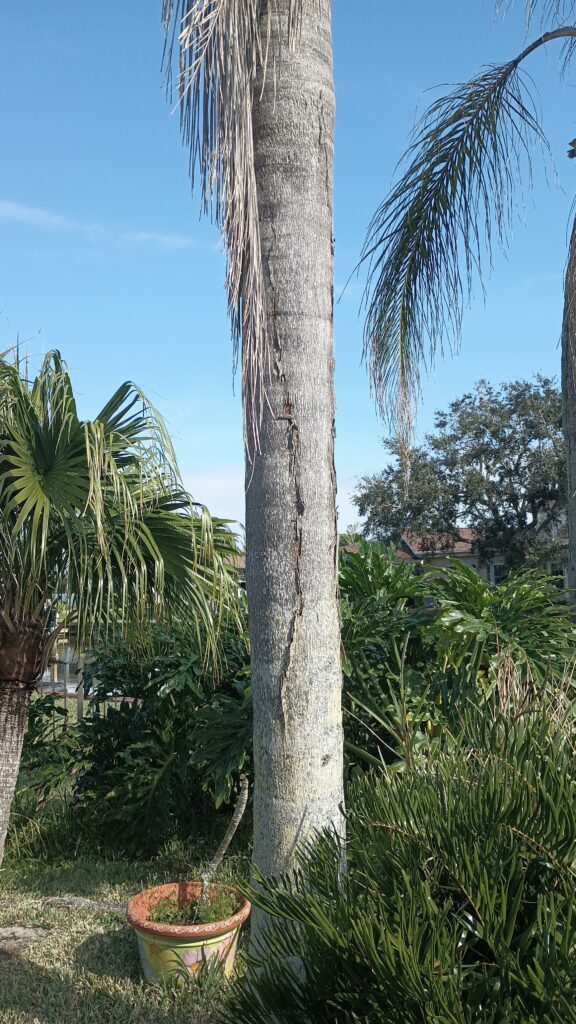
Palm Health and Complete Fertilization
Just like us, palms need a balanced diet to stay strong and fight off diseases. Using a complete fertilizer formulated specifically for palms provides essential nutrients that boost their natural defenses against Ganoderma and other threats.
Beyond Ganoderma: Other Palm Killers to Watch Out For
While Ganoderma is a major concern, it’s not the only enemy of Florida palms. Here are two other potentially fatal diseases:
- Lethal Bronzing Disease (LBD): Spread by sap-feeding insects, LBD causes yellowing, stunted growth, and eventual death. This disease primarily affects coconut palms but can threaten other species as well.
- Fusarium Wilt: Several Fusarium fungus strains can infect palms, disrupting their vascular system and causing wilting, decline, and ultimately death. A wide range of palm species are susceptible.
Keeping Your Palms Healthy: Arbor Patrol’s Recommendations
Here are some key takeaways to protect your palm trees from Ganoderma and other threats:
- Regular Inspections: Schedule annual inspections by a certified arborist to identify any signs of Ganoderma or other diseases in their early stages.
- Proper Trimming: Avoid over-trimming and opt for professional services that prioritize palm health and proper pruning techniques.
- Clean Equipment: Inquire about a tree service company’s cleaning protocols to ensure they use disinfected equipment for every job. At Arbor Patrol, clean equipment is a top priority.
- Complete Palm Fertilization: Use a balanced fertilizer formulated specifically for palms to provide essential nutrients and boost their natural defenses.
- Diversity in Landscaping: Planting a variety of tree species in your landscape, not just palms, reduces the risk of widespread devastation if a disease outbreak occurs.
Early Detection is Key
Remember, early detection is crucial in the fight against Ganoderma. If you notice any signs of decline in your palm, such as stunted growth, yellowing fronds, or unusual leaning, contact a certified arborist like Arbor Patrol Tree Service immediately. We can diagnose the problem, remove the infected tree, and help you save your surviving palm trees.
Together, we can keep Florida’s palms healthy and thriving!
Arbor Patrol Tree Service: Your Partner in Palm Health
If you have any questions about Ganoderma butt rot, palm health, or need any other tree services call us at (321)951-3443
Frequently Asked Questions; Ganoderma Butt Rott In Palms
My Queen palm seems to be wilting. Is it Ganoderma?
Wilting can be a symptom of Ganoderma butt rot, but it can also be caused by other factors. A certified arborist can examine your palm and diagnose the problem accurately. Early signs of Ganoderma can be subtle, so don’t hesitate to seek professional help if you suspect an issue.
What are some other diseases that can harm my palms?
Besides Ganoderma, Lethal Bronzing Disease (LBD) and Fusarium Wilt are significant threats to Florida palms.
Can I treat Ganoderma butt rot if I catch it early?
Unfortunately, there is currently no cure for Ganoderma butt rot. However, maintaining palm health through proper care, fertilization, and avoiding over-pruning can help prevent infection in the first place.
How does Ganoderma actually infect palm trees?
The Ganoderma fungus lives in the soil and enters the palm tree through wounds on the roots or trunk base. These wounds can be caused by improper pruning, insect damage, or mechanical injuries. Once inside, the fungus disrupts the palm’s vascular system, hindering its ability to transport water and nutrients.
Are there any visual signs I can look for to identify Ganoderma early?
Wilting or drooping fronds: This can be a general indicator of stress, but in conjunction with other symptoms, it could point towards Ganoderma.
Discoloration of fronds: Yellowing or browning of fronds, especially at the base, can be a warning sign.
Premature frond loss: If your palm is losing fronds at a faster rate than usual, it could be a cause for concern.
Mushrooms at the base: The presence of white, spongy mushrooms (coniophores) growing around the base of the trunk is a strong indicator of a Ganoderma infection.
Besides professional trimming, are there any things I can do to maintain palm health at home?
Proper watering: Overwatering and underwatering can stress your palm, making it more susceptible to disease. Learn the specific watering needs of your palm species and adjust your watering routine accordingly.
Mulching: Apply a layer of mulch around the base of your palm (but not touching the trunk) to retain moisture, regulate soil temperature, and suppress weed growth.
Monitoring for pests and diseases: Regularly inspect your palms for signs of insect infestation or disease. Early detection and treatment of other issues can help your palm stay healthy and fight off potential Ganoderma infection.
Are there any palm species that are completely resistant to Ganoderma?
Unfortunately, no palm species is entirely immune to Ganoderma.
What happens if I don’t remove a palm infected with Ganoderma?
Leaving an infected palm can be risky. The disease will continue to progress, weakening the tree and increasing the chance of falling or structural failure. Additionally, spores from the infected palm can spread to nearby healthy palms, posing a threat to your entire landscape.
Can Sago palms be effected by Ganoderma?
No, Sago Palms (Cycas revoluta) are not typically susceptible to Ganoderma butt rot. Here’s why:
Different Plant Family: Sago palms belong to the Cycadophyta family, which is distinct from the Arecaceae (palm) family. Ganoderma fungus primarily targets palm trees.
Fungal Specificity: Different Ganoderma species tend to have specific hosts. The Ganoderma species that infects palms (Ganoderma zonatum) doesn’t target Sago palms.
Vascular System Differences: Sago palms lack a true vascular system like most trees. They have a different internal structure that might not be conducive to Ganoderma infection.
